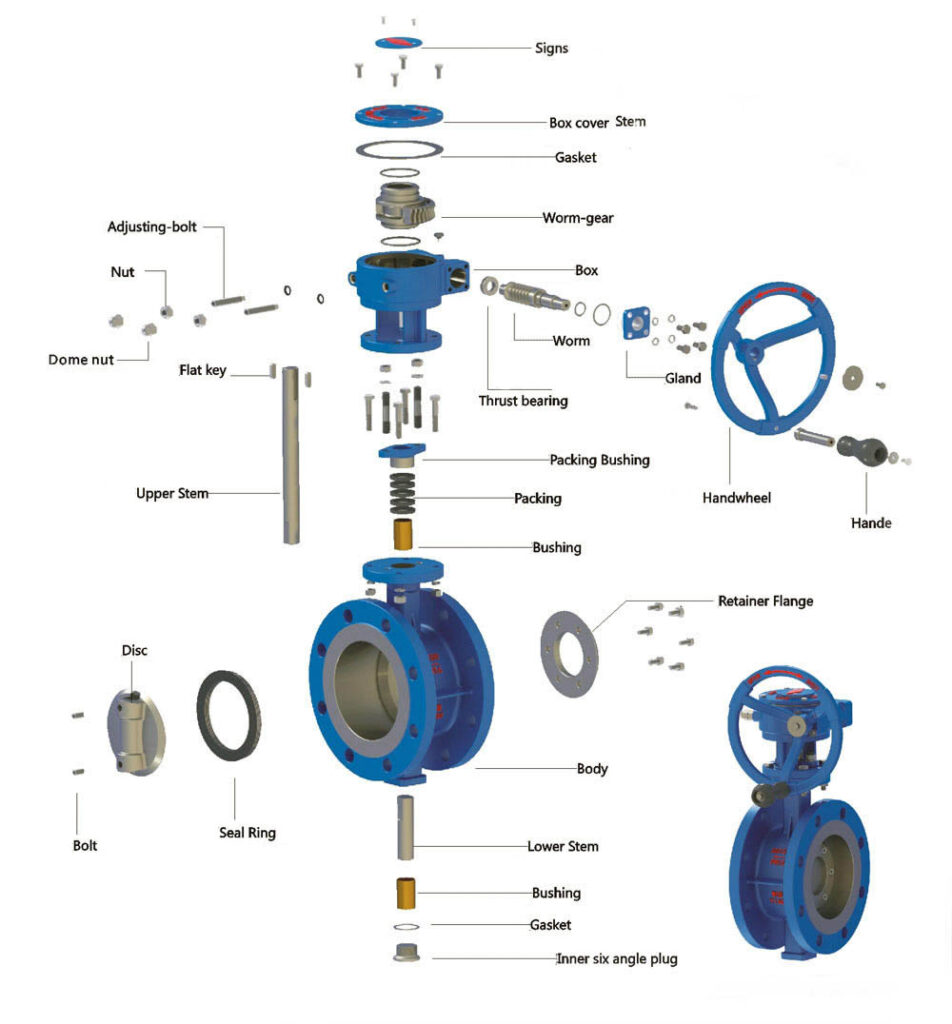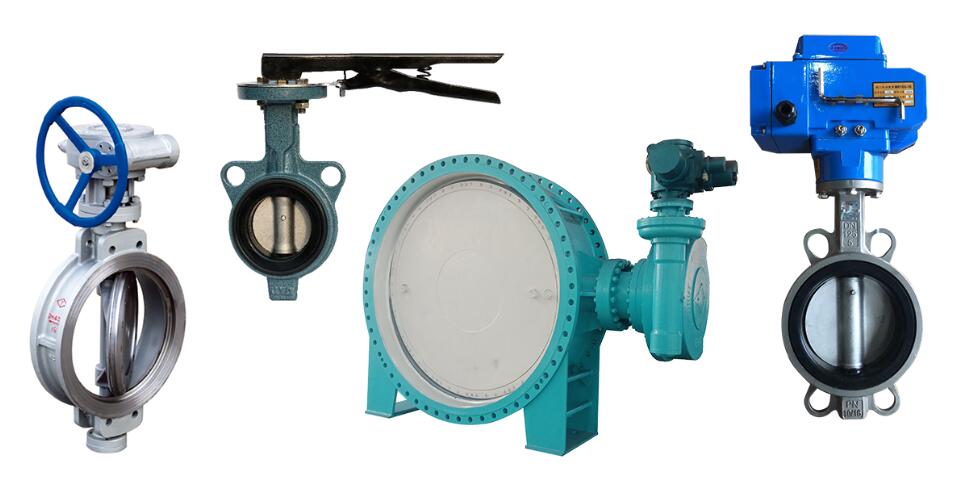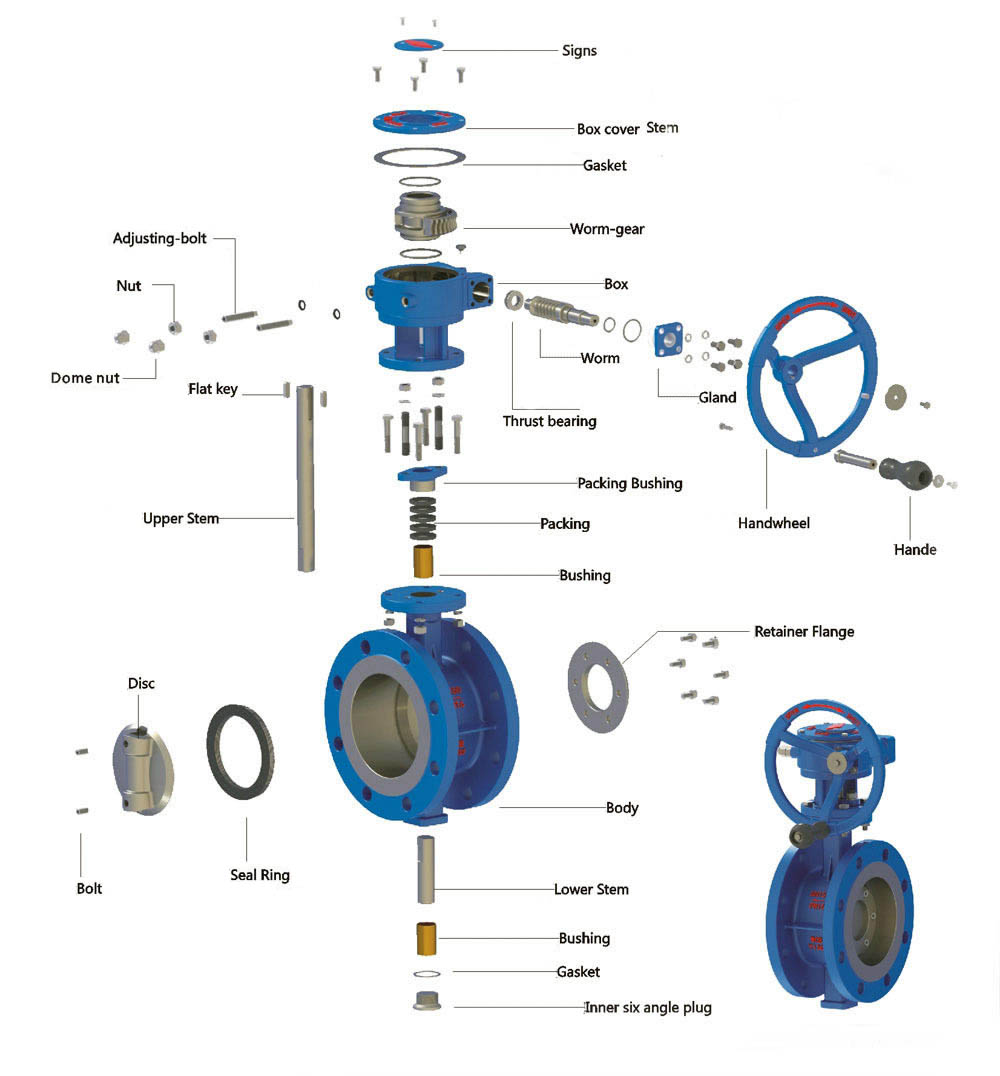Butterfly valve structure is a type of quarter-turn valve that uses a disc-shaped closure element, バタフライディスク, to control the flow of fluid. The butterfly disc is mounted on a shaft and is positioned in the center of the valve body, which is a round or oval-shaped pipe. The disc rotates around the shaft to regulate the flow of fluid through the valve.
The main parts of butterfly valve structure

蝶のバルブ are versatile and commonly used in industrial applications where tight shut-off is required. They consist of four main components of structure: バルブ本体, バタフライディスク, the stem, and the actuator.
Butterfly valve body
The valve body is designed to match the piping system and contains the seat that the disc seals against when the valve is closed. This is important because it ensures that the valve provides a tight shut-off, preventing any unwanted leaks or losses in the system.
Butterfly valve disc
The butterfly disc is usually made of a lightweight material, such as aluminum, and is either concentric or eccentric in shape. The concentric design places the disc in the center of the valve body, while the eccentric structure design places it off-center. The choice of design depends on the specific application and the desired flow characteristics.
Butterfly valve stem
The stem connects the actuator to the disc and allows the disc to rotate. It is typically made of a sturdy material such as stainless steel to withstand the torque required to operate the valve.
Several different types of butterfly valve actuation
The actuator, which can be either manual or automatic, is used to operate the valve and move the disc into the desired position. Manual actuators are operated by hand, while automatic actuators are driven by an external power source such as compressed air, 電気, or hydraulic pressure.

Butterfly valves come in a variety of designs, 含む wafer structure, lug structure, そして flanged structure configurations.
- Wafer butterfly valves are installed between two flanges and held in place by bolts.
- Lug butterfly valves have threaded inserts at the end of the valve body that allow them to be bolted onto the piping system.
- Flanged butterfly valves have flanges at the end of the valve body that are bolted onto the piping system.
Each design has its own advantages and disadvantages, and the choice of design depends on the specific application and the desired installation and maintenance requirements.
全体, butterfly valves are known for their simple design, lightweight construction, and quick operation. They are commonly used in applications that require tight shut-off, 化学産業や食品加工産業など. They are also useful in applications where flow control is important, as they provide excellent throttling capabilities. With their versatility and ease of use, butterfly valves are an excellent choice for a wide range of industrial applications.

